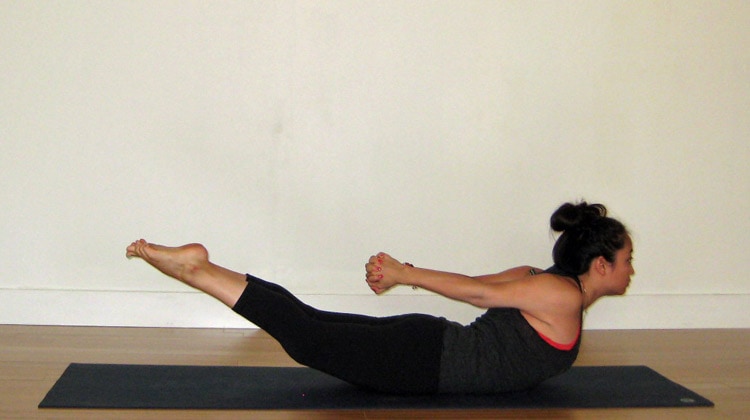Locust Pose (Salabhasana) is a “baby backbend” that does wonders for strengthening the back body and core, while improving spinal flexibility. While it may look unassuming, maintaining the pose takes a great degree of energy, not unlike the tension a locust builds before leaping.
Practicing Locust pose regularly can help to develop the strength and flexibility to move safely and effectively into deeper backbends and can also help to ease lower back pain.
Benefits of Locust Pose
Locust Pose stretches the entire front of the body—shoulders, chest, and belly—as well as the front thighs, and strengthens the muscles of the back, glutes, and the arms and legs. It can also help improve posture and digestion by stimulating the abdominal organs, and helps combat stress and fatigue.
Locust Pose Step-By-Step
- Begin lying on your belly with your legs extended straight back behind you, the tops of your feet down, and your forehead resting down on your mat.
- Find a slight internal rotation of your thighs by turning your big toes in toward one another, and keep pressing the tops of your feet down as you lift your kneecaps away from the ground (you should feel your legs engage as you do this).
- Reach back and interlace your fingers, pressing your palms together to touch and drawing your shoulder blades together on your back.
- On an inhale, peel your chest up off the ground and reach your hands back actively toward your feet.
- With your chest lifted, begin to also lift your feet and legs up off the ground. Reach the inner lines of your legs toward the ceiling, keeping the big toes together or the feet no wider than hip distance apart.
- Keep your chin parallel to the floor and your gaze neutral to maintain length along the back of the neck as you extend out through your feet and use your breath to help lift you higher.
- Remain in the pose for 5 breaths, then on an exhale, gently release your legs down and relax your arms by your side, resting on your belly.
Tips
- There are several different arm variations in this pose. Having your fingers interlaced behind your back adds a nice shoulder stretch to the pose; if it feels like too much, the pose can be modified with the arms alongside the body, or with the arms extended in front.
- If there’s any discomfort or pressure under the hips or belly, take a folded blanket or towel underneath you.
- This pose can also be practiced by lifting one leg at a time—with your palms pressing down on the mat beneath your shoulders, lift your right leg and hold, release, then lift your left leg and hold.


